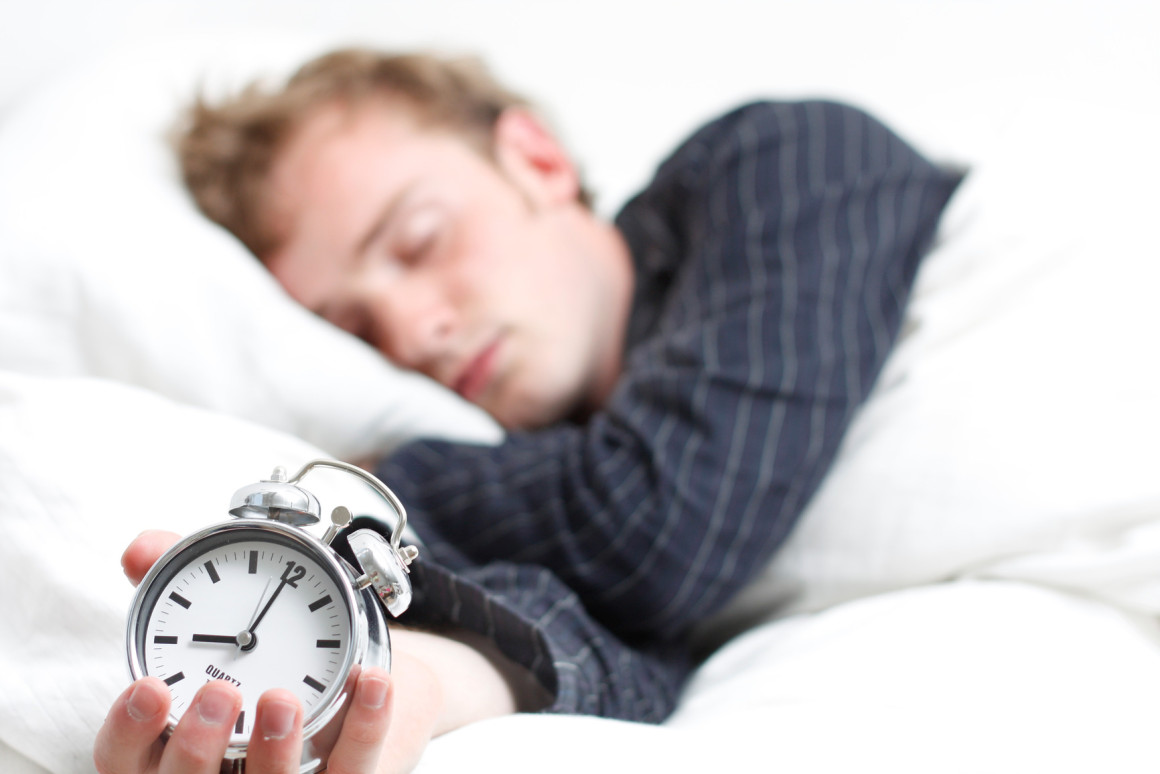Parents nag their children, from age one to fifty, about the importance of receiving a sufficient amount of sleep. Today medical research is proving this parental instinct to be correct. Sleep isn’t only important in the early developmental stages of a child’s life, but is essential to keeping the aging body healthy.
Receiving less than six hours of sleep a night leaves the individual cognitively impaired.[1] What this means is reaction time is slower, which makes partaking in daily manual activities, like driving, dangerous. Experts have claimed that such impairment and fatigue played a role in the Exxon Valdez oil spill, the Staten Island ferry crash and the Three-Mile nuclear meltdown.[2] Cognitive impairment also means decline in memory and learning ability. A decline in these abilities results from modification to several gene expressions, often in charge of neuroplasticity, or the brains growth.[3] It gets worse. When an individual is on a healthy sleeping schedule their amygdala, which derives basic emotions, is connected to the frontal cortex, which regulates the emotions. In the case of sleep deprivation, fatigue, or cognitive impairment these two brain functions are not in sync. This guarantees poor emotional regulation, and compromised rational.
Moreover, sleep is key in immune function and health durability. Longevity expert, Stephan Rechtschaffen discusses the role of sleep in improving quality of life and reaching todays, modern day life expectancy. Sleep, he explains is when the brain releases specific chemicals associated with longevity. The chemical glutathione is a major endogenous antioxidant.[4][5] The role of the antioxidant glutathione is cleansing the body and brain of dead cells— in other words ridding the body of toxins that prevent neural regeneration and peak functioning. When the body isn’t giving glutathione the time to cleanse the body, toxic byproducts like Amyloid Beta accumulate.[6]
Amyloid Beta kills brain cells, disrupting the rate of regeneration. The harmful effect of this toxic byproduct is Alzheimer disease.[7] Stephan Rechtschaffen establishes that sleep is essential to quality of life. Living with pain and diseases like Alzheimer’s is burdensome and life shortening.
“Pain is bilaterally related to sleep.”
Pain is a huge factor in quality of life. It has the ability to literally take years off of a person’s life.[8] Pain is also bilaterally related to sleep. For example, individuals suffering from insomnia have a smaller pain tolerance, or higher pain sensitivity.[9] Insomnia is a burdensome disorder that can result from unhealthy sleeping habits. When the body isn’t comforted by sleep, it isn’t able to protect itself from pain.
Osteoarthritis Pain
The following study discusses Osteoarthritis and the ability of sleep to relieve the pain resulting from Osteoarthritis. Such pain is experienced by approximately half of older American adults, in the hands, knees, hips, feet and the back. This results from the demanding use of joints within these limbs. Osteoarthritis breaks down the cartilage between the joints causing stretching between the ligaments, a direct cause of consistent pain amongst millions of Americans.
A yearlong sleep behavioral therapy assigned to a group of twenty-three patients, resulted in immediate improvements to joint pain amongst those with osteoarthritis. The therapy, CBT-I, used in this study has been determined to improve sleep in 75-80% of insomnia patients. The therapy includes the following[10]:
Establishing a regular Sleeping Schedule:
- This retrains the body to recognize when it is time to rest.
- A sleeping pattern guarantees that the brain and organs are receiving daily nourishment, and the circadian rhythm and sleep/wake cycle are functioning properly.
- Helps avoid insomnia.
Sleep only when drowsy—do not force yourself to sleep:
- If you are restless and unable to sleep, do not force it.
- The best solution is to listen to the body, which might be getting out of bed and reading or working.
- Lying in bed restless can be setting a precedent that contrasts the function of a bed, which is relaxation.
- Only when you are drowsy—your eyelids begin to get heavy—you can return to the bed.
Avoiding napping during the day:
- Those who suffer from sleeping disorders should not sleep during the day.
- They are likely to suffer from sleep inertia—feeling disoriented upon waking up from a nap.
- Sleeping during the day also has the ability to cause nighttime sleep problems.
This study concluded that by applying such techniques to improve sleep the individual takes control of managing chronic pain, like osteoarthritis.[11]
“Results suggest the importance of adequate sleep in various chronic pain…”[12]
—
This article was contributed by Jacqueline Lantsman.
Jacqueline is from Brooklyn, New York, and is majoring in Public Health and Justice and Law. She discovered her interest in health when recognizing the poor life-styles of her fellow New Yorkers. For the past 5 years she has been dedicated to learning about bettering the standards of living—from dietary trends, to limiting desk-bound routines. She currently writes for the American Society for Biochemistry and Molecular Biology, and serves as the Self-care Committee Coordinator at American University’s, Students Against Sexual Violence. Her participation in the Yoga and Mindfulness Research stems from her interest in learning of the self-care treatments that yoga and meditation offer.
To read more about our students and to find out about the research they are doing, visit the Mind-Body Medicine homepage.
—
References
[1] Ferrie, Jane E., et al. “Change in Sleep Duration and Cognitive Function: Findings from the Whitehall II Study.” 34.5 (1 May 2011): n.pag. Web. 15 Mar. 2016.
[2] Hoffman, John. “Sleepless in America.” National Geographic, 2014.
[3] Dickson, Clayton T. “Ups and Downs in the Hippocampus: The Influence of Oscillatory Sleep States on “neuroplasticity” at Different Time Scales.” Behavioural Brain Research 214.1 (1 Dec. 2010): 35–41. Web. 15 Mar. 2016.
[4] Rechtschaffen, Stephan. “Longevity.” 8 Mar. 2016. Personal Communication.
[5] Everson, CA, CD Laatsch, and N Hogg. “Antioxidant Defense Responses to Sleep Loss and Sleep Recovery.” American journal of physiology. Regulatory, integrative and comparative physiology. 288.2 (9 Oct. 2004): n.pag. Web. 15 Mar. 2016.
[6] ’almeida, Vânia D, and Debora Hipolide. “Sleep Deprivation Induces Brain Region-Specific Decreases in Glutathione Levels.” 9.12 (24 Aug. 1998): 2853–2856. Web. 15 Mar. 2016.
[7] Xie, Lulu, Hongyi Kang, and Qiwu Xu. “Sleep drives metabolite clearance from the adult brain.”ScienceMag. 18 Oct. 2013. 14 Nov. 2015. <http://www.sciencemag.org/content/342/6156/373.full>.
[8] Canada, Government of. Health-Adjusted Life Expectancy (HALE) in Canada 2012 – Chronic Diseases – Public Health Agency of Canada – Government of Canada. 25 Sept. 2012. Web. 9 Mar. 2016.
[9] “Pain; Impaired Sleep Linked to Lower Pain Tolerance.” NewsRx Health. 1 July 2008. Web. 9 Mar. 2016.
[10] “CBT-I Treatment.” cbtforinsomnia. 2016. Web. 9 Mar. 2016.
[11] Vitiello, Michael V., et al. “Cognitive Behavioral Therapy for Insomnia Improves Sleep and Decreases Pain in Older Adults with Co-Morbid Insomnia and Osteoarthritis.” 5.4 (15 Aug. 2009): n.pag. Web. 9 Mar. 2016.
[12] “Increasing Sleep Time Reduces Pain Sensitivity.”Sleep Review. 31 Jan. 2012. Web. 9 Mar. 2016.
Image Credit: http://www.preapps.com/blog/wp-content/uploads/2015/09/Valuable-Sleep.jpg



